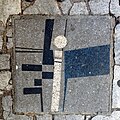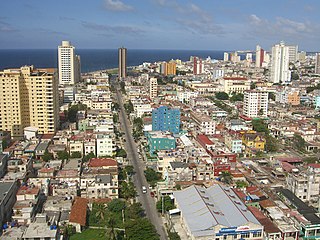
Havana is the capital and largest city of Cuba. The heart of the La Habana Province, Havana is the country's main port and commercial center. It is the most populous city, the largest by area, and the second largest metropolitan area in the Caribbean region. The population in 2002 was 2,137,847 inhabitants, and its area is 728.26 km2 (281.18 sq mi) for the capital city side and 8,475.57 km2 for the metropolitan zone.

The Museum of the Revolution is located in the Old Havana section of Havana, Cuba, in what was the Presidential Palace of all Cuban presidents from Mario García Menocal to Fulgencio Batista. The building became the Museum of the Revolution during the years following the Cuban Revolution. The palace building was attacked by the Directorio Revolucionario 13 de Marzo in 1957.

Vedado is a central business district and urban neighborhood in the city of Havana, Cuba. Bordered on the east by Calzada de Infanta and Central Havana, and on the west by the Alemendares River and Miramar / Playa district, Vedado is a more modern part of the city than the areas to the east, developed in the first half of the 20th century, during the Republic period. In 2016 it was described by one commentator as the city's "most affluent" section. The main street running east to west is Calle 23, also known as "La Rampa". The northern edge of the district is the waterfront seawall known as the Malecón, a famous and popular place for social gatherings in the city. The area popularly referred to as 'Vedado' consists of the wards of Vedado, Rampa, Vedado-Malecón and Carmelo, all in the municipality of Plaza de la Revolución.

La Mansión de Mark Pollack, is a neo-classical, Florentine mansion in the Cubanacan Section of Havana, Cuba built in 1930 by the Cuban architect, Leonardo Morales y Pedroso (1887–1965). It is located at 21st street #15001, Cubanacan, Havana, Cuba. It was built for Mark Alexander Pollack (1874–1946), the son of Alexander Pollack and Belle A. Rothschild (1848-1936), the American-born patriarch of a wealthy Cuban tobacco exporter. The house covers an area of 13,000 square meters.

Leonardo Morales y Pedroso was one of the most prominent Cuban architect in Cuba in the first half 20th century. In 1900 he entered and attended pre-university studies at De Witt Clinton High of New York, where he obtained a bachelor's degree. In 1909 he graduated of Bachelor in Architecture from Columbia University. After graduating, he returned to Cuba in 1909 where he worked a time in the local architect firm of Newton & Sola with the architect Thomas M. Newton, who was director of the civil construction section of the Secretary of Public Works during the 2nd American intervention in Cuba. In February 1910, he returned to the United States and obtained a master's degree (Doctor) in Architecture from Columbia University in the State of New York. After obtaining his doctorate in architecture he joined in March 1910 the architecture Company Morales y Mata arquitectos, created in 1907 by his elder brother the engineer Luis Morales y Pedroso in association with the master builder Jose F. Mata. In 1917, after having built more than 30 important buildings, they decided to separate from José Mata, who had to stop working because illness and died a short time later. The company changed its name for Morales y Compañia Arquitectos with his brother the engineer Luis Morales y Pedroso as president and Leonardo as Associate together with other 7 architects. He was able to obtain noteworthy real estate commissions partly because of his family's origin, good social connections and social standing in Havana high society. He was named by the Cuban press of the time as the "Havana's architect" and his architectural style is recognized as the "Morales style". During 50 years Leonardo Morales y Pedroso received around 250 notable architectural commissions, some of them include:

The Salón de Mayo was an art exhibition held in Havana, Cuba, in July 1967. It took its name from the Salon de Mai, an artists collective founded during the Nazi occupation of France. It was organized by Carlos Franqui with the assistance of such artists as Wifredo Lam, René Portocarrero, Alexander Calder, Joan Miró, Pablo Picasso.

The Lonja del Comercio building in Old Havana, Cuba served as the stock exchange in the capital until the 1959 Cuban Revolution. Today, it is an office building.

La Rampa is a main street in the Vedado district of Havana, Cuba. La Rampa runs from Calle L to the Malecón. Built in 1930, the end was the location of the Battery of Santa Clara that protected the city from attack.

The FOCSA Building is a residential and commercial block in the Vedado neighborhood of Havana, Cuba. At 121 meters (397 ft), it is the tallest building in Cuba. It was named after the contracting company Fomento de Obras y Construcciones, Sociedad Anónima, and the architects were Ernesto Gómez Sampera (1921–2004), Mercedes Diaz, and Martín Domínguez Esteban (1897-1970), who was the architect of the Radiocentro CMQ Building. The structural engineer was Luis Sáenz Duplace, of the firm Sáenz, Cancio & Martín, and professor of engineering at the University of Havana. The civil engineers were Bartolome Bestard and Manuel Padron. Gustavo Becquer and Fernando H.Meneses were the mechanical and electrical engineers, respectively. It is located on a site bordered by Calles 17 and M and Calles 19 and N in the Vedado.

CMQ was a Cuban radio and television station located in Havana, Cuba, reaching an audience in the 1940s and 1950s, attracting viewers and listeners with a program that ranged from music to news dissemination. It later expanded into radio and television networks. As a radio network it was a heated competitor of the RHC-Cadena Azul network.

José Antonio Echeverría Bianchi was a prominent figure in the Cuban Revolution against President Fulgencio Batista. Echeverría was the President of the Federation of University Students and a founding member of the militant organization Directorio Revolucionario 13 de Marzo. He is known for his role in the attack on the Presidential Palace and the Radio Reloj radio station of Cuba. Echeverría's nickname was "Manzanita," which means "Little Apple."

The López Serrano Building was the tallest residential building in Cuba until the construction of the FOCSA in 1956. Designed by the architect Ricardo Mira in 1929, who in 1941 who also designed La Moderna Poesia bookstore on Obispo Street for the same owner, it is often compared to the Bacardi Building in Old Havana built two years before the López Serrano Building because of their similarity in massing and central tower. The congressman, senator, and presidential candidate Eduardo Chibás was living on the fourteenth-floor penthouse when he committed suicide in August 1951 on the air at CMQ Radio Station.

Colegio Nacional de Arquitectos de Cuba (C.N.A.C.) is a Cuban national institution based in Havana, that grew out of El Colegio de Arquitectos de La Habana.

The 1957 Havana Presidential Palace attack was a failed assassination attempt on the life of President Fulgencio Batista at the Presidential Palace in Havana, Cuba. The attack began at around 3:30 pm on March 13, 1957, carried out by Menelao Mora, a group of members of the Partido Auténtico, and the student opposition group Directorio Revolucionario 13 de Marzo, but was unsuccessful in its goal of killing Batista. According to one of the group's founding members, Faure Chomón, they were following the golpe arriba strategy and sought to overthrow the government by killing Batista.

The Iglesia del Espíritu Santo is a colonial church at #702 Calle Cuba in Old Havana, Havana, Cuba, was built in 1635 on the corner of the corner of Calles Cuba and Acosta. The Espíritu Santo contains some notable paintings including a seated, post-crucifixion Christ on the right wall, and catacombs. It is considered one of the oldest temples in Havana. Free blacks, already numerous, devoted the church to the Holy Spirit in 1638.

The Edificio del Seguro Médico is a commercial building in El Vedado, Havana. Built between 1955 and 1958, it was designed as a mixed use building for apartments and offices for the headquarters of the National Medical Insurance Company by Antonio Quintana Simonetti.

Martín Domínguez Esteban was a Spanish architect.
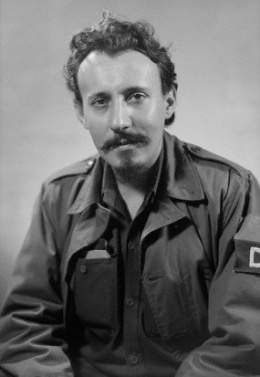
Faure Chomón Mediavilla was a Cuban historian and politician. He was one of the founding members and leaders of the Directorio Revolucionario 13 de Marzo. After the triumph of the Revolution he joined Fidel Castro's government. Early in his career, he served as the Secretary of Communication and Transportation and Ambassador to the Soviet Union. Later he served as Ambassador to Vietnam and Ecuador as well as historian of the Revolution. He was also member of the National Assembly of People's Power from 1976 to his death.
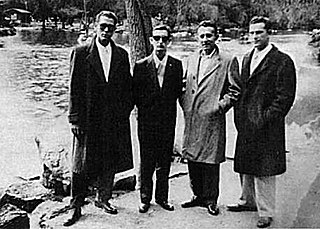
The Humboldt 7 massacre was the extrajudicial killing of four armed Directorio Revolucionario (DR) members by the Havana police on 20 April 1957. The police, led by Lt. Colonel Esteban Ventura Novo, entered apartment 201 of Humboldt 7, a residential building, where the DRE members were hiding. The four men who were killed during the incident had taken part in the Havana Presidential Palace attack and the seizure of the Radio Reloj station at the Radiocentro CMQ Building.
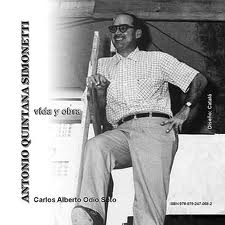
Antonio Luis Quintana Simonetti was a Cuban architect and a forerunner of Modern architecture in Havana. Quintana graduated from the University of Havana in 1944, among his works are some of the most important modernist buildings in the capital. Dissatisfied as a student with the classical canons, Antonio Quintana participated in 1944 in the so-called "Burning of Vignola" in the courtyard of the School of Architecture of the University of Havana. From this date forward, he began to study the precepts of contemporary architecture. He graduated as an architect in the same year.













